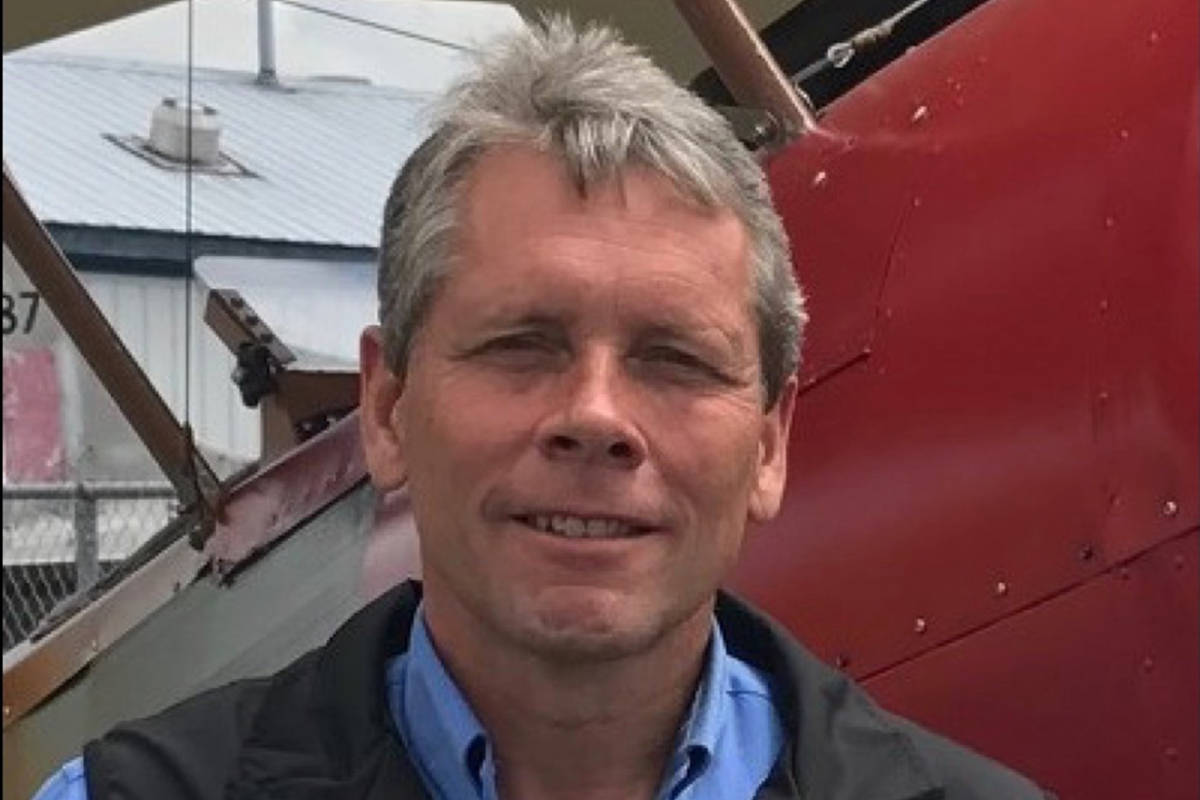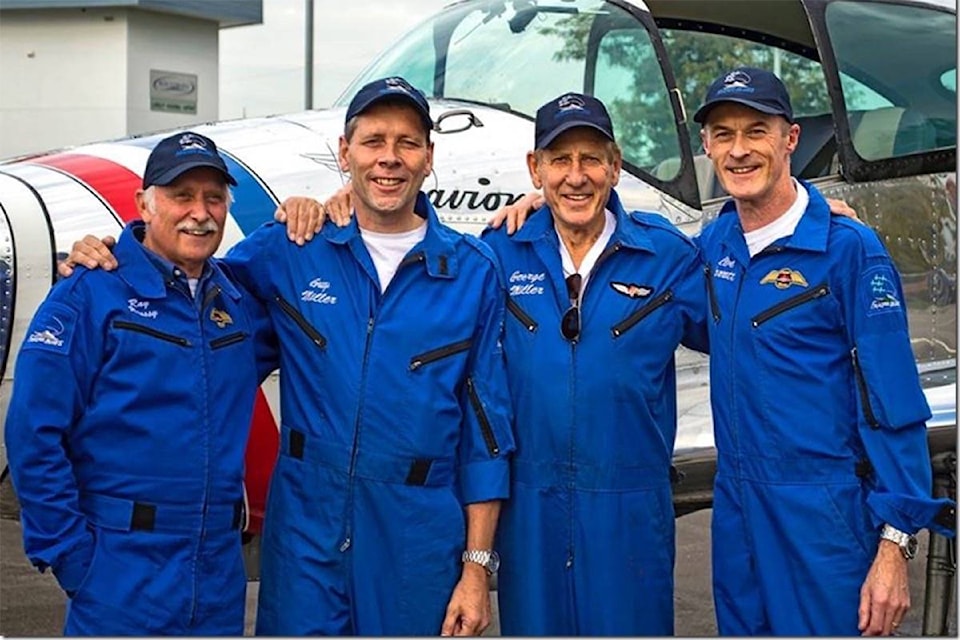Every time George Miller performs a Remembrance Day flyby with his formation team, there is one person who first jumps to his mind.
It was a young man who came under his air force squadron when he was only 22 years old.
George considered him a good pilot and a very good friend.
The year was 1956 and they were both serving in Germany doing Iron Curtain patrols.
George remembers flying to Morocco with his buddy in F86 Sabre jets for military exercises just the day before.
“We flew out over the Atlantic, firing our weapons and guns. We had six guns on the F86. Beautiful weather. It was a tremendously exciting time,” remembered George.
However, while they were gone, stormy weather conditions closed in on Zweibrücken, where they were based, and his friend was scheduled to fly first thing the next day.
”His very first mission was to take off in the early morning scramble and he couldn’t get his landing gear up and had problems,” said George, thinking back to the day.
“I’m not sure exactly what happened, but I know he lost control of the aircraft as a result of misreading the instruments and whatever and ended up crashing right at the end of the runway,” he said.
“I always remember him because his wife was waiting for him in the canteen with their child. And going down and trying to reconcile that situation, it was heartbreaking,” he added.
“He’s the first person who comes to mind every time at this type of ceremony.”
George, along with his son, Guy Miller – general manager of the Pitt Meadows Regional Airport – and Clive Barrat, Ray Roussy and David Arnold make up the formation flying team The Fraser Blues.
And for the past 20 years, they have been performing Remembrance Day ceremony flybys from Abbotsford to Port Kells.
This year, for the first time, they are including the ceremonies in Maple Ridge and Pitt Meadows.
George joined the Royal Canadian Air Force on Nov. 23 1953, at the age of 18. By then, the Second World War had been over for about eight years, but Russia was becoming a global threat. Then Canada pledged 12 squadrons of F-86 Sabre jets to be stationed overseas.
“So the recruitment was on. We had a lot of Second World War pilots still, but they needed some young bucks like myself,” said George.
That’s when he was stationed in Germany. Eventually, he would come back to Canada to work.
During that time, he tried out for the national aerobatic team called the Golden Hawks and flew with them from a while.
George was sent back to Germany two times to fly the CF-104 Starfighter and, in 1973, four months into his second assignment, he was asked to lead the Snowbirds, Canada’s military aerobatics flight demonstration team, which he did for the next two years.
After that, he was the commandant of flying training for three years in Moose Jaw, Sask., then he was selected to go to the Army Staff College as resident officer Lieutenant Colonel , directing staff.
After moving back to Moose Jaw to become the base commander, he retired from the air force in 1987, working in the private sector for a while.
“For a couple of years, I was really missing flying. So I bought an aircraft,” George said.
“It was a nice aircraft, but it wasn’t the kind of aircraft that I fly with the Fraser Blues.”
In 1991, George became manager of the Langley Regional Airport and the same year formed the team, the same formation team he heads today.
Then he bought a Ryan Navion aircraft, a U.S. single-engine, unpressurized, retractable gear, four-seat aircraft, originally build in the 1940s by North American Aviation, and started looking for military pilots who had a lot of formation experience and would be willing to purchase the same aircraft to fly.
“It’s a very manoeuvrable aircraft, it’s extremely comfortable to fly and it’s a forgiving aircraft,” said George.
“If you have a problem with it being a military pattern, it had good redundant systems that you wouldn’t hesitate to land it in a field if I had to and feel it was quite survivable. And reliable engines. It had a lot of things going for it,” he said.
The team will be flying four feet apart in a four-ship box or diamond formation, with a lead plane and another plane right behind and two wingers on either side.
“It’s one thing to fly straight and level in formation. It’s another thing to start turning and using the vertical and pulling G-force while you’re flying formation,” said Guy Miller.
The team practises once a week, in addition to the weekends. And for Remembrance Day flyby they will practise at least a couple of times. They have never missed a Remembrance Day since forming.
“The significance is really with the smoke in the flyby. It’s a salute, it’s an appreciation, it’s something we can do that basically a lot of people on the ground and the veterans would appreciate and understand for the sacrifice and the service that was performed by [veterans] on the ground and for many of those that didn’t come back,” said Guy.
For George, the flyover is a sombre moment, looking down at the crowds at each Remembrance Day event.
He lost many flying friends over the 35 years he spent in the air force.
“So many of them were like myself. And here I am I just turned 83 and they lost 60 years of their lives. So it’s something to remember,” he said.
“The crowds, every year, are getting larger. People really want to pay recognition to the sacrifice of people who gave their lives during past conflicts, including, of course, the First and Second World Wars,” said George, who took his whole family to the commemorative centennial tour of the Battle of Vimy Ridge, France, in April of last year.
“And it really tugs on the heart when you are in the air force, particularly with my background and those who fly with me who had that type of background,” continued George.
“You realize how much we owe them.”
• The Fraser Blues will start in Abbotsford and then fly over Aldergrove, Maple Ridge and Pitt Meadows at around 10:55 a.m., Fort Langley at exactly 11 a.m., then Murrayville, the City of Langley, Cloverdale and Port Kells.

